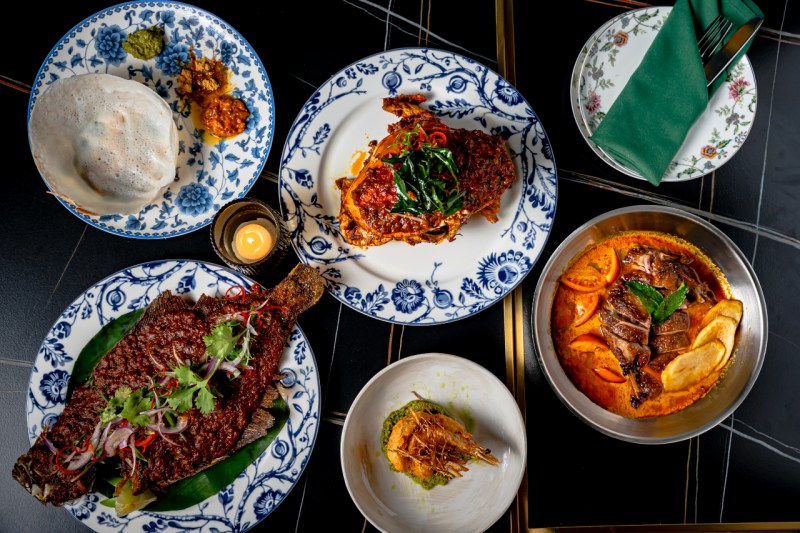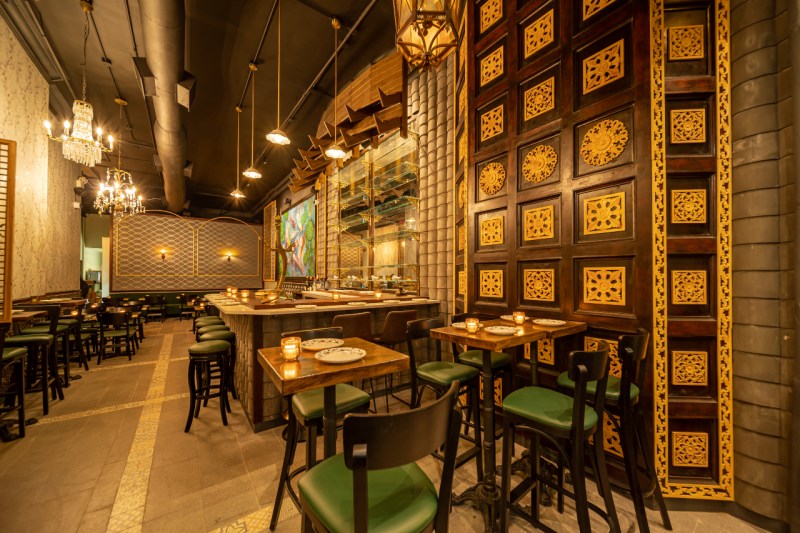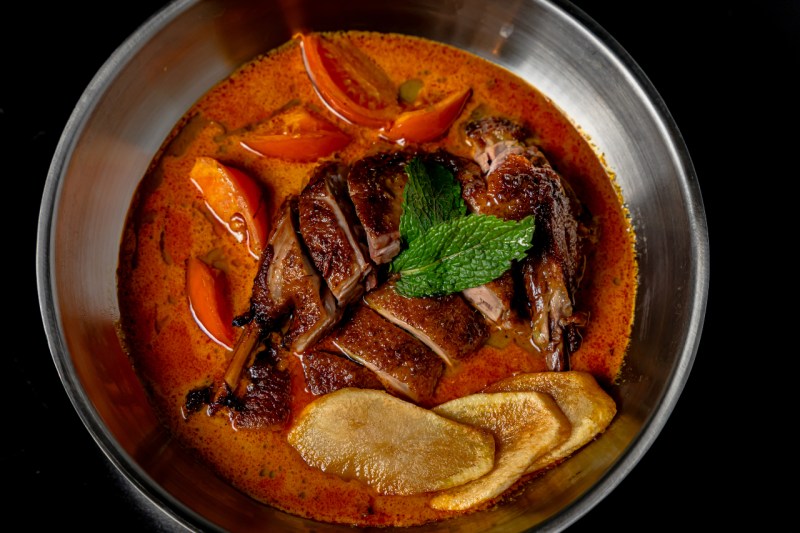
While Southeast Asian cuisines like Thai and Vietnamese have become widespread in America, Southeast Asia is hugely diverse, with countless local cultures, traditions, and specialties. Kebaya, a recently opened colorful and modern restaurant in New York, is a unique establishment that’s one of the few places in America that specializes in a highly regional Asian food — Peranakan cuisine.
Helmed by Chef Salil Mehta of Singlish and Singapura and Margaret Goh, a second-generation Peranakan-Singaporean and New York-based food consultant, Kebaya is a rare journey into a culinary world that’s relatively unknown in mainstream America.
“We wanted to showcase the vibrant colors and bold spices that make Peranakan food special and give our customers an unforgettable culinary experience,” Mehta said.

Peranakan history: A cultural fusion
To understand Peranakan cuisine, it’s important to understand the history and cultural context. First, Peranakan doesn’t refer to a country but rather an ethnic group. The origins of Peranakan culture trace back to centuries of Southern Chinese migration into Southeast Asia, specifically Malaysia, Singapore, and Indonesia.
Over time, these migrants intermarried with the local Malay, Thai, and Javanese populations, blending Southern Chinese culture with local ingredients and traditions. And the centers of Peranakan culture also transcend national borders, with the main areas being Malacca (Malaysia), Penang (Malaysia), Phuket (Thailand), Singapore, and Tangerang (Indonesia).
What is Peranakan cuisine?
The result of all this history and cross-pollination is the creation of a distinctive hybrid cuisine and culture. Because of this layered history, Peranakan cuisine is complex and can be hard to pinpoint for people unfamiliar with the region. Many Peranakan dishes combine Malay, Indonesian, and Chinese techniques, flavors, and ingredients. Also, as a major historical transit point for Indian merchants, this region of the world is also ripe with the spices and cuisines of South Asia.
At the center of Peranakan cuisine is a focused and dynamic balance of five essential flavors: sour, spicy, savory, umami, and sweet. Using ingredients like lime juice or tamarind creates the sour elements. Spicy flavors are achieved through various chili peppers, which can be made into sambal chili paste, particularly the Peranakan sambal or belacan, a fermented fish paste. Savory aromatics like garlic and shallots are used liberally, and powerful umami is accented through fermented and dried ingredients derived from fish or shellfish. And lastly, sweetness in the form of palm sugar and coconut milk is used to balance the powerful heat and savory flavors.
“Peranakan food is a unique and delicious fusion cuisine combining the flavors of India, China, and Malaysia,” Mehta stated. “It often features aromatic spices, vibrant colors, and a variety of ingredients like coconut milk and chili peppers. The result is a truly different and flavorful experience that will tantalize your taste buds.”

What to eat
While Kebaya does feature dishes, such as Southeast Asian grilled satay skewers, that can be found in other Malaysian or Singaporean restaurants, the renditions here are some of the best in New York City. Some of the tastiest dishes to order are the Hokkien mee, a chewy and thick stir-fried noodle cooked decadently in lard, and a massive ikan bakar. This show-stopping fish dish features a whole fluke covered in a rich chili sambal. While the fish is delicate, the skin is perfectly crispy and tasty when eaten with plenty of sambal chili, the perfect spicy food to accompany the various rice dishes at Kebaya.
However, unsurprisingly, some of the more intriguing items on the menu are the Peranakan specialties. One of the most popular items is the Nyonya duck curry, a satisfying and creamy dish that’s highlighted by the quality of the locally sourced Long Island duck. Like all Southeast Asian curries, this duck curry is excellent with rice.
Another must-try dish on the menu to truly experience the cuisine is the Peranakan staple: Ayam Buah Keluak. A braised bone-in chicken cooked with tamarind paste, spices, and buah keluak nuts, which is toxic in its raw form, the flavor of this chicken dish is as dark as its color — a rich caramelized, almost dark cacao flavor that permeates the entire meat.
But for Mehta, his favorite is the Babi Pong Teh, a stew consisting of chunks of fork-soft pork belly. Cooked with plentiful amounts of garlic, shallots, tamarind juice, cinnamon, soy sauce, and rock sugar, this pork dish is heavily influenced by Chinese cuisine, reminiscent of Chinese red-braised pork. Pork is a major protein in Peranakan cuisine, a key point of difference with the majority Muslim populations of Malaysia, Indonesia, and Southern Thailand. No order at Kebaya would be complete without this rich pork braise, which, of course, is essential with plenty of rice.
Editors' Recommendations
- How (and why) parmesan, pecorino romano, gruyere, and asiago cheeses may help with digestive issues
- It’s time to pay attention to Hawaiian rum — why this liquor should be on your bar cart
- Winter squash — why RDs love it (and their favorite ways to eat it)
- Why is mushroom coffee suddenly so popular? We’ll tell you
- Soju, shochu, and more: An Asian spirits guide for the intrepid imbiber




